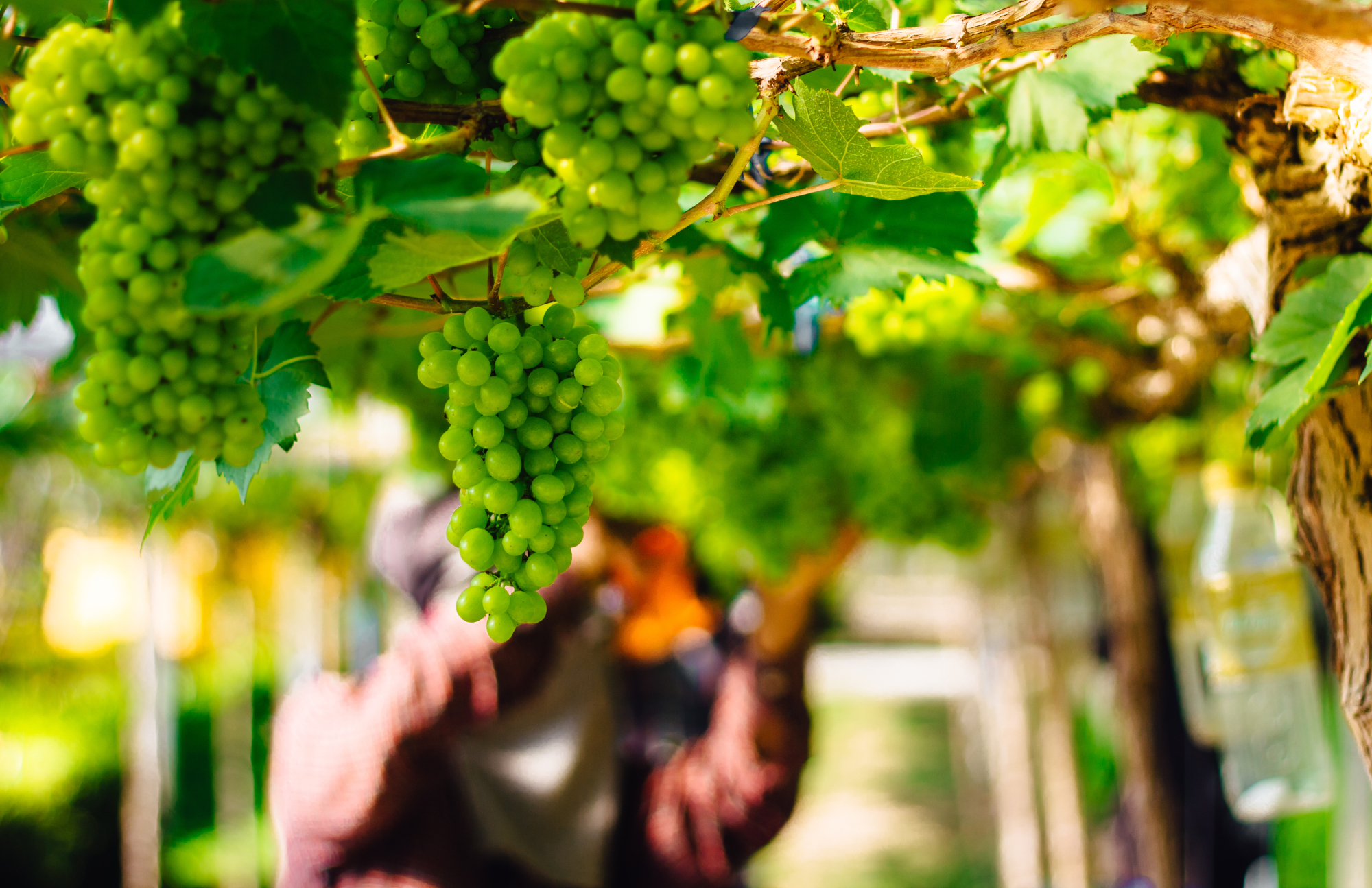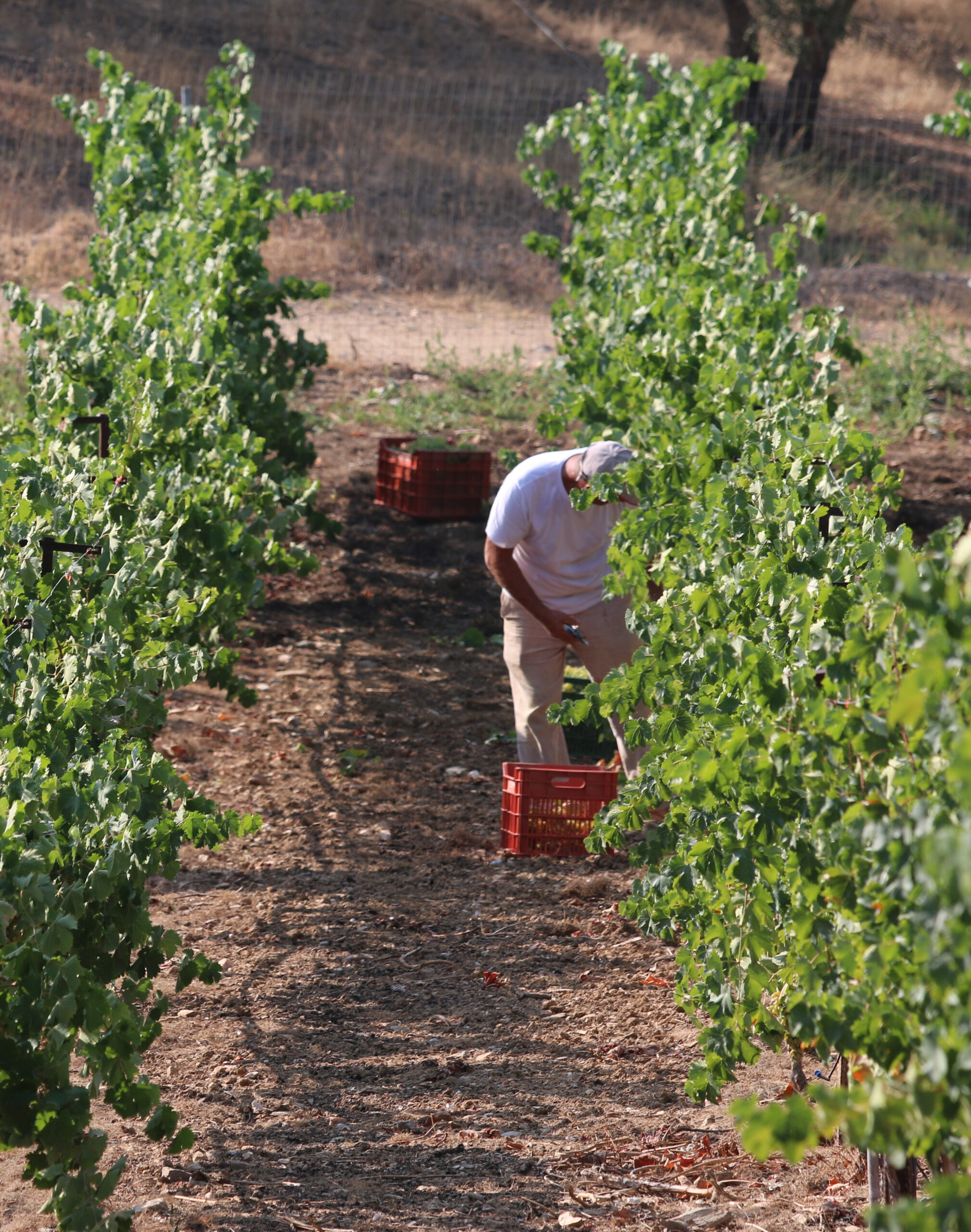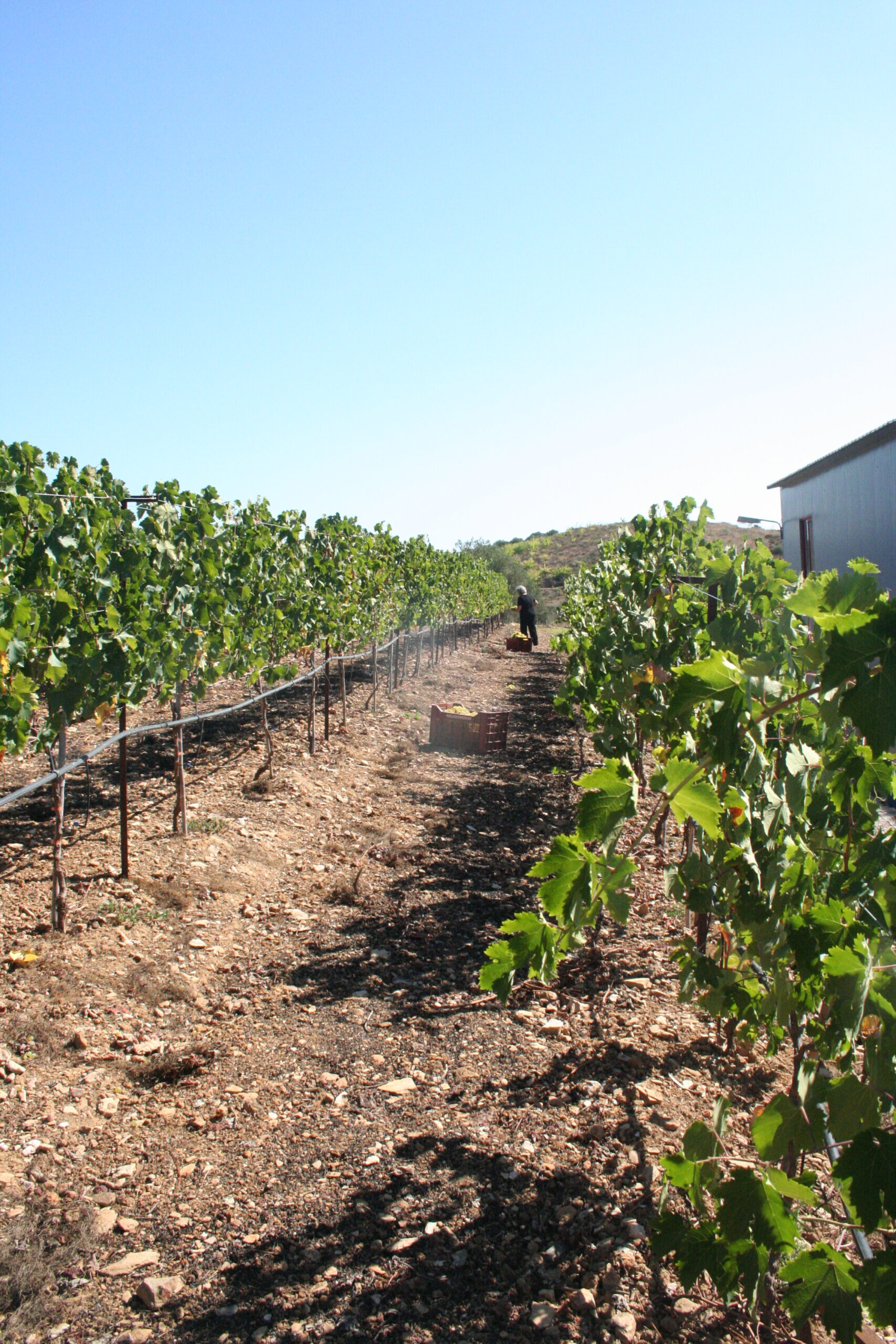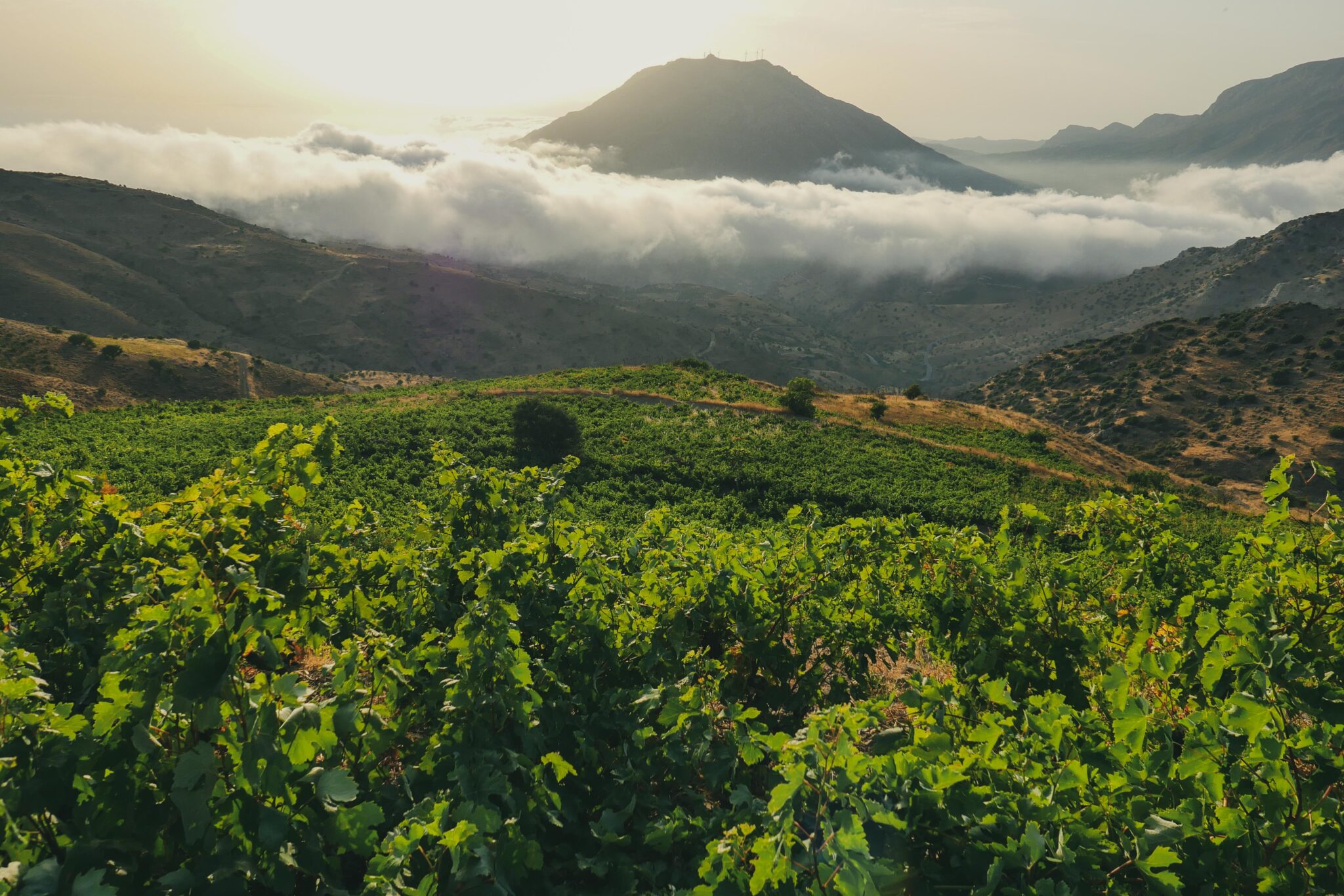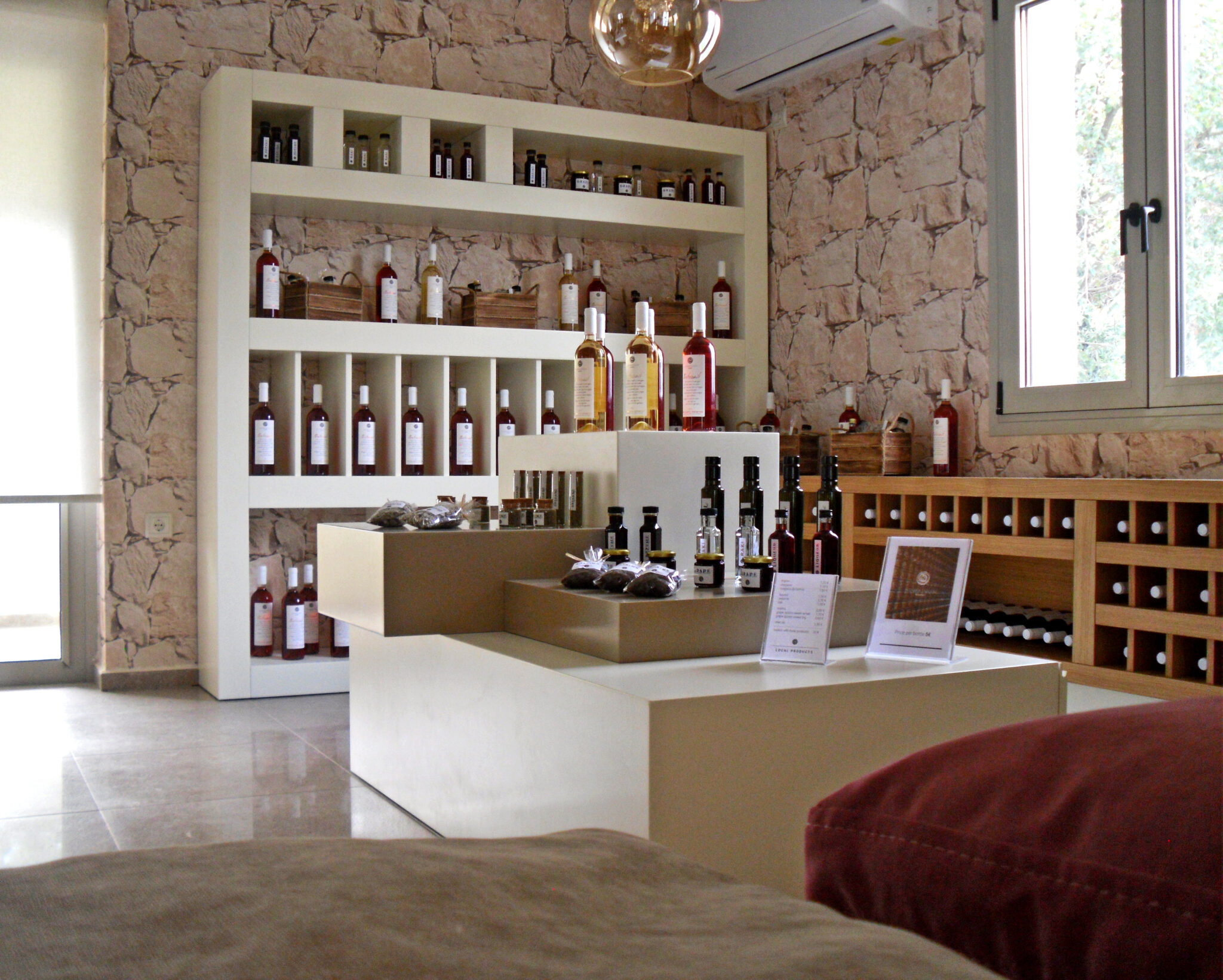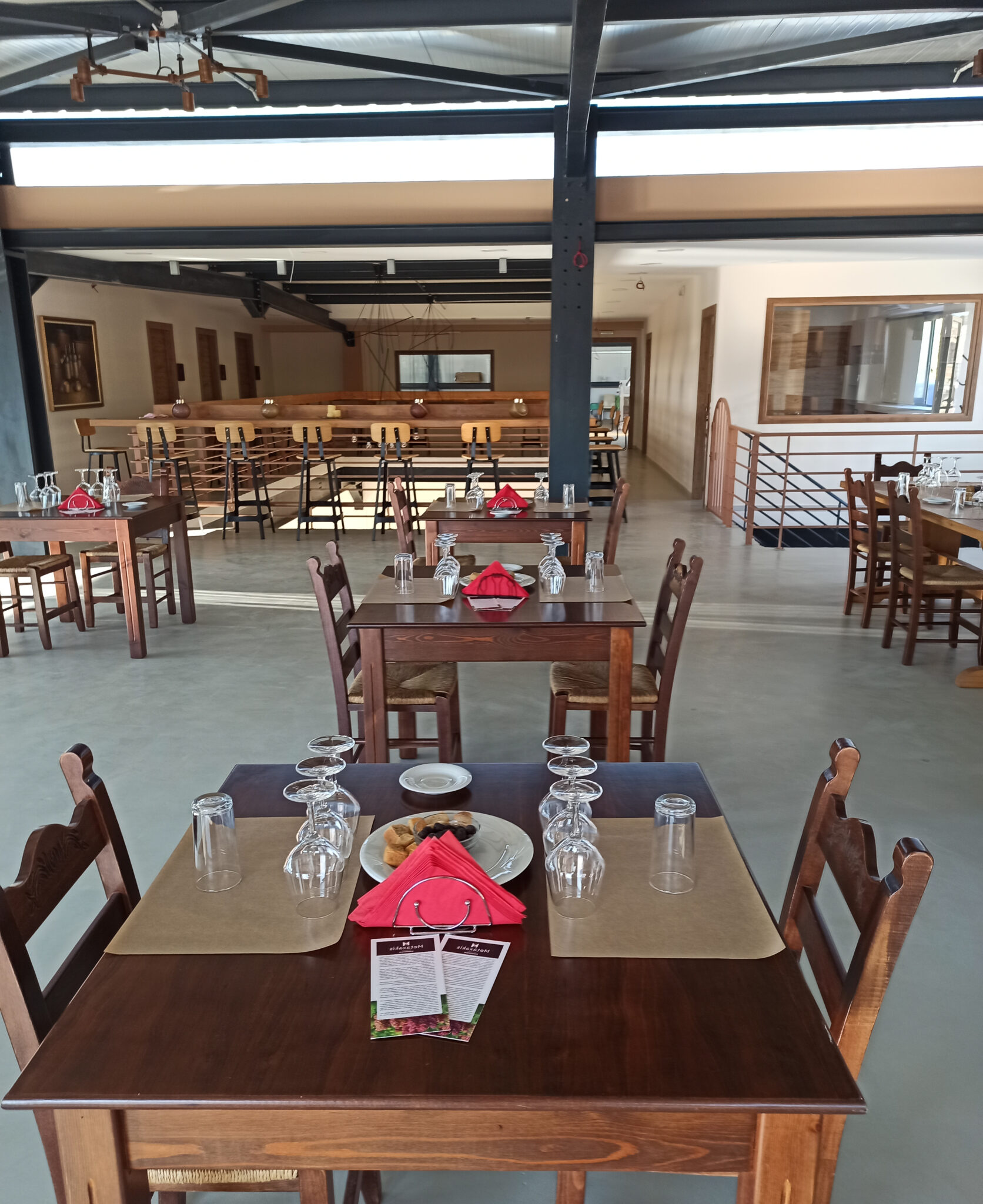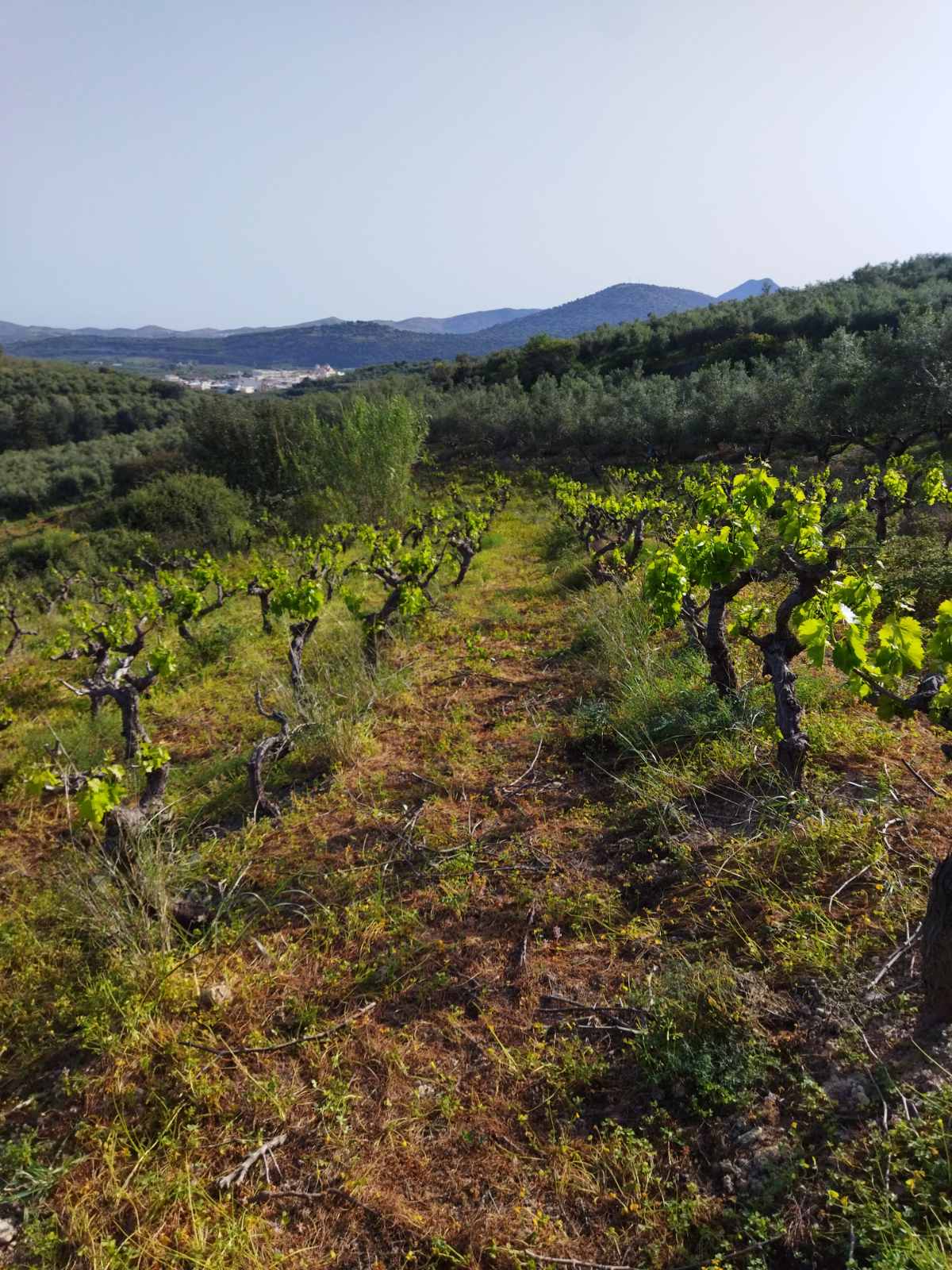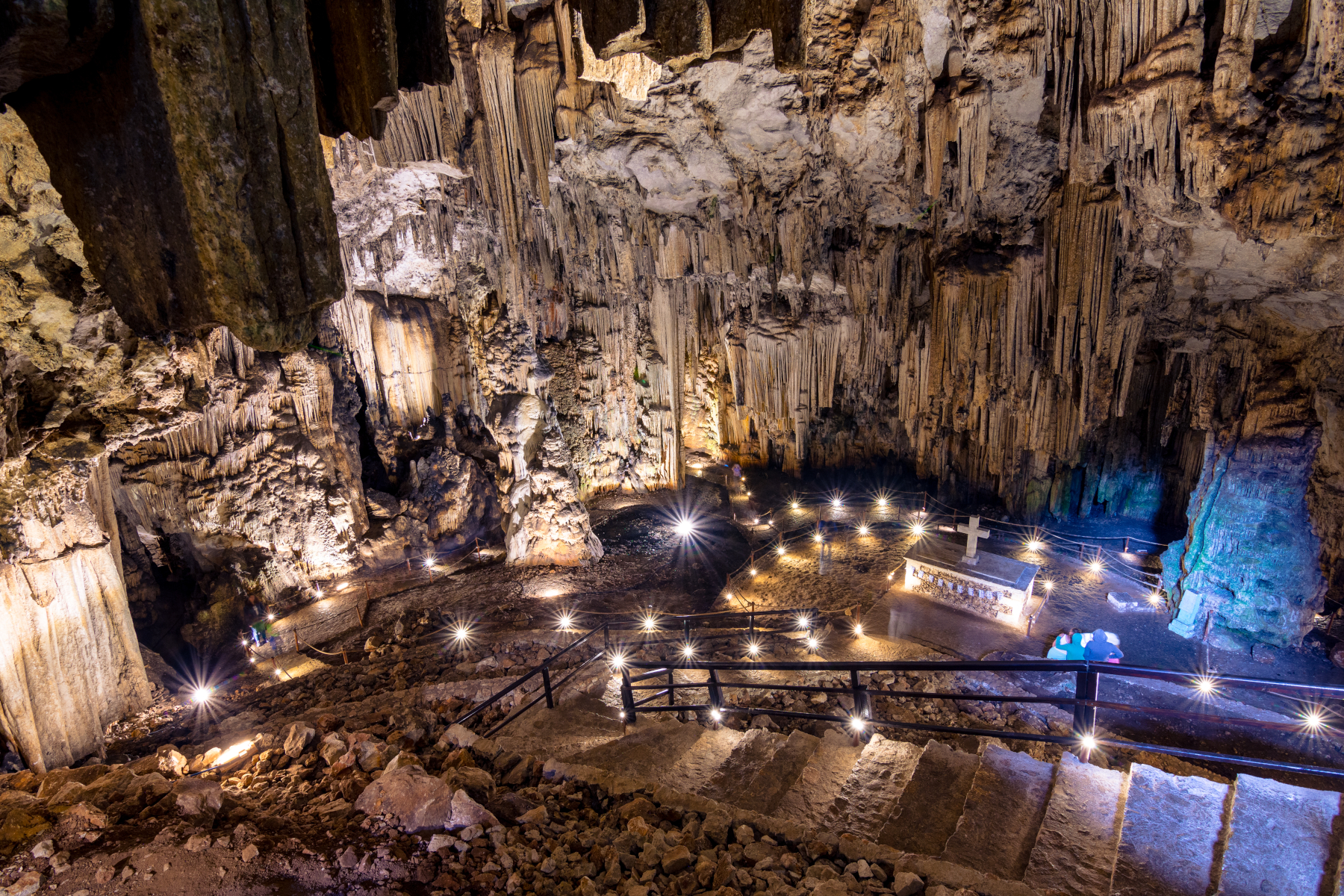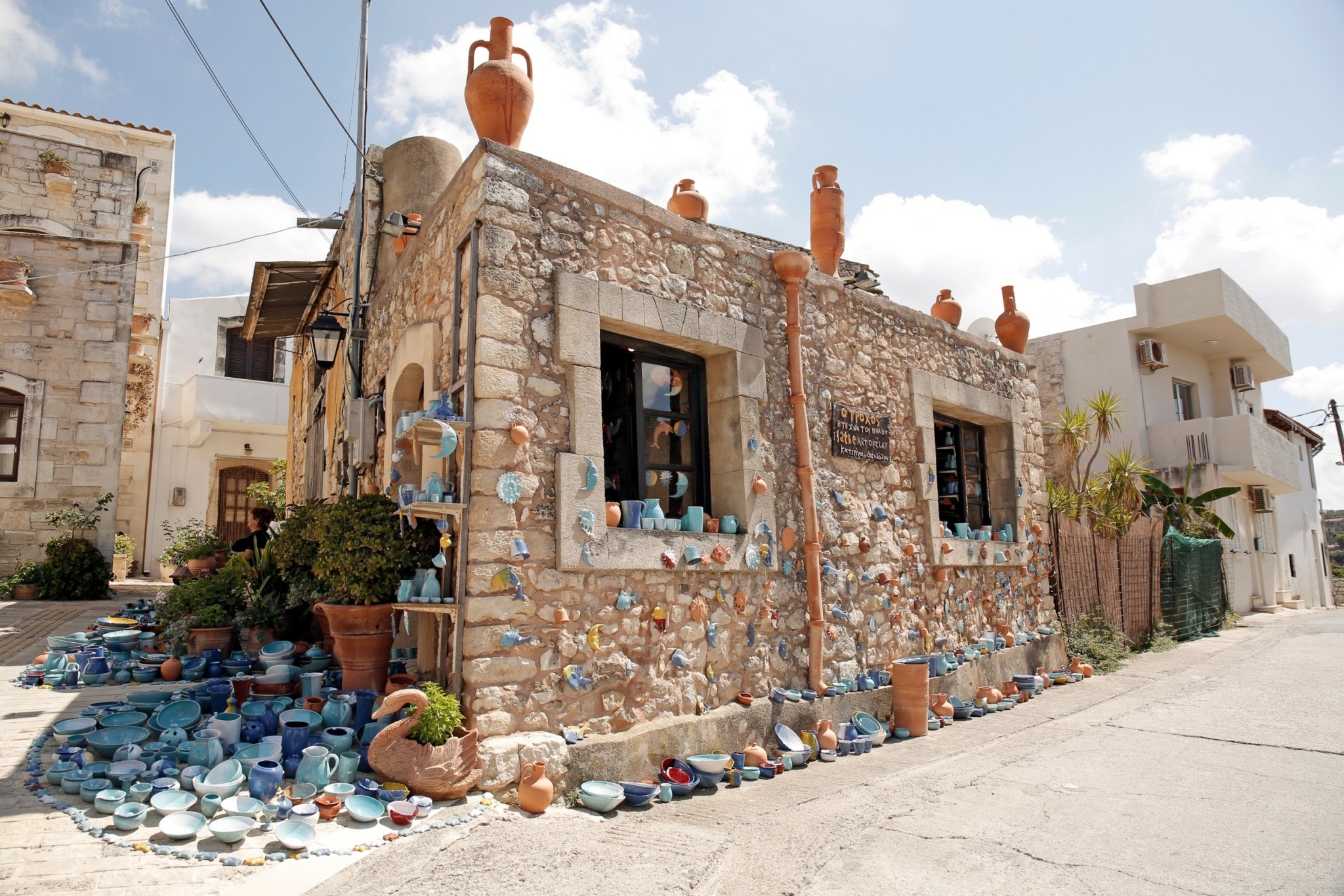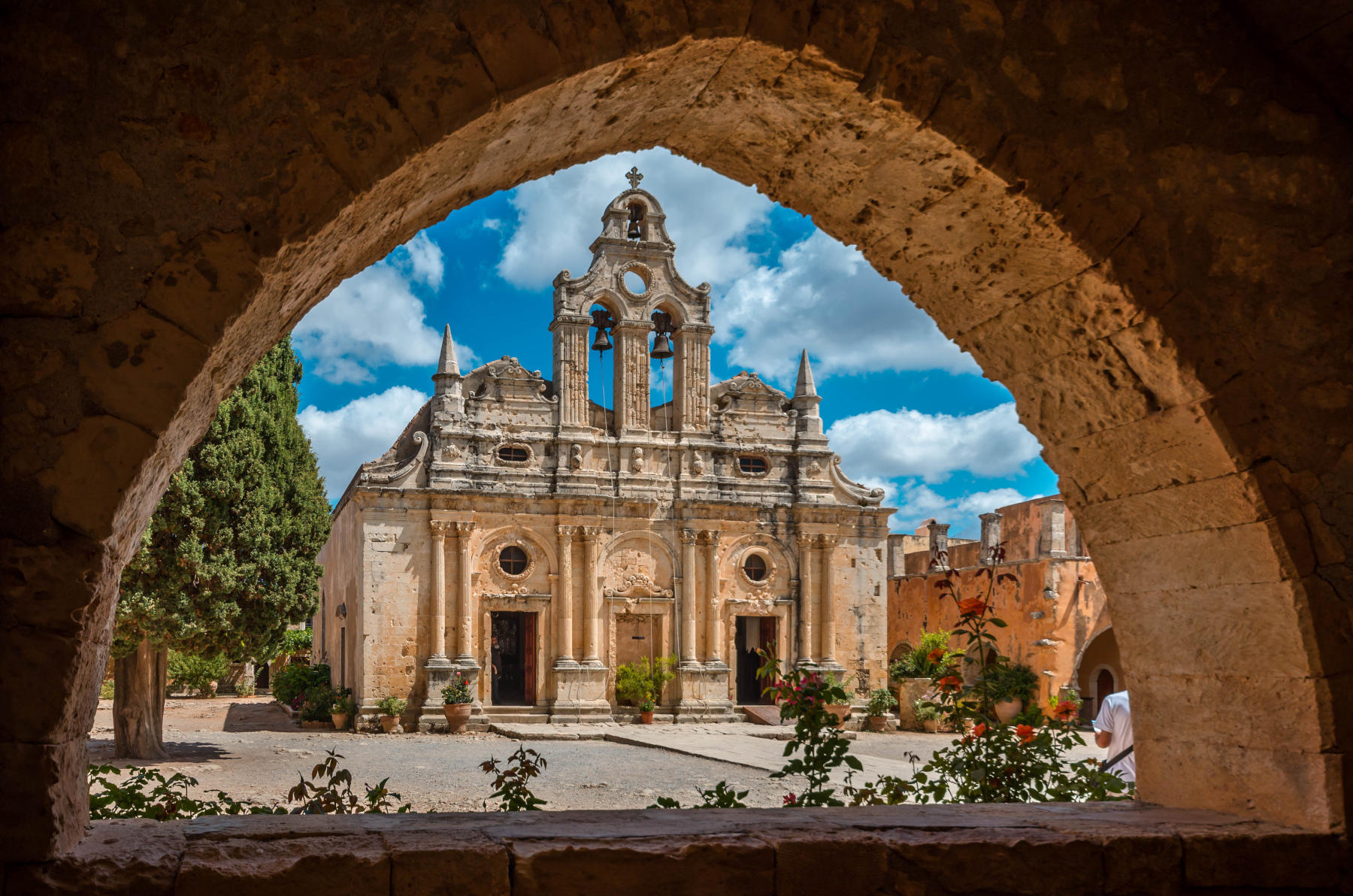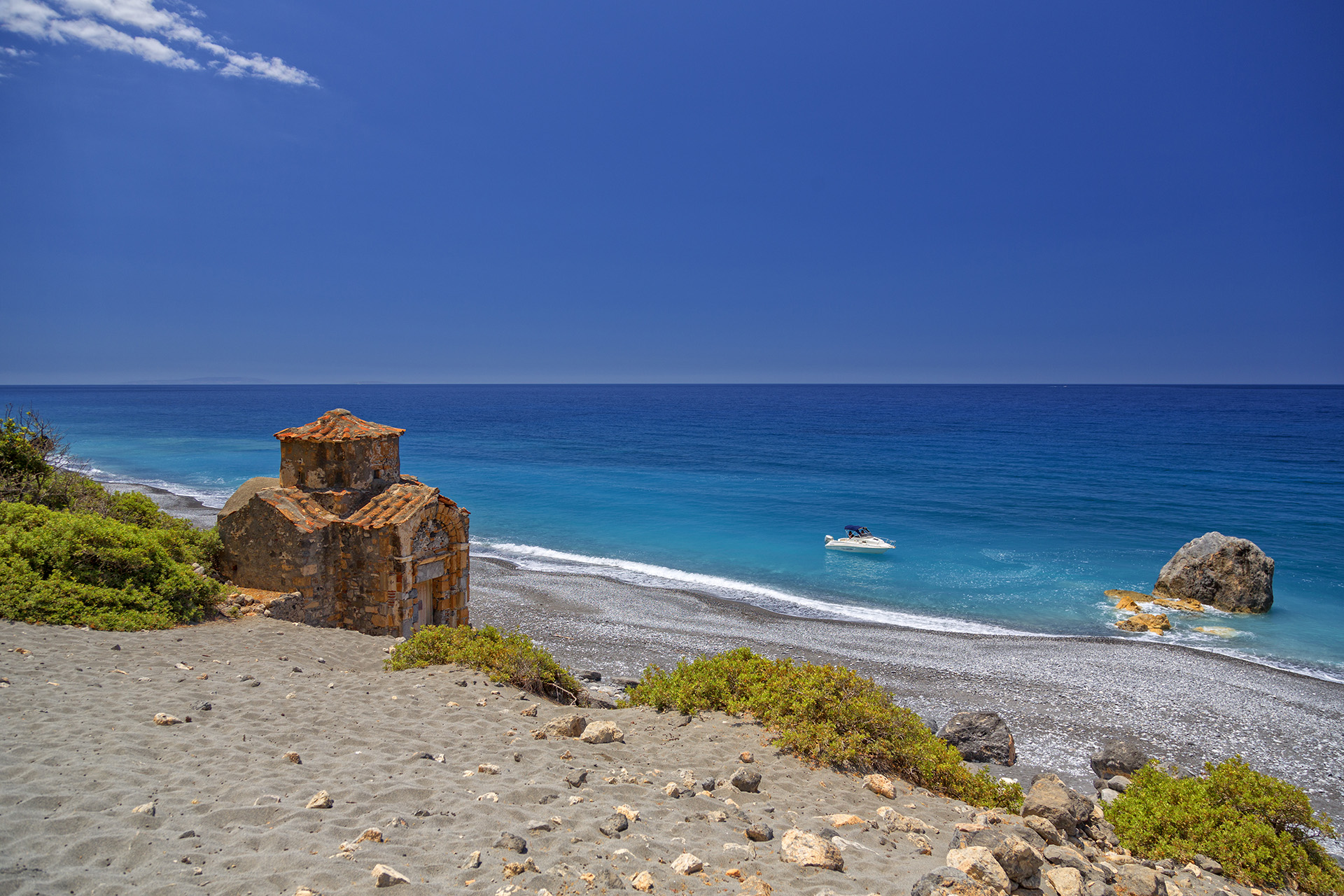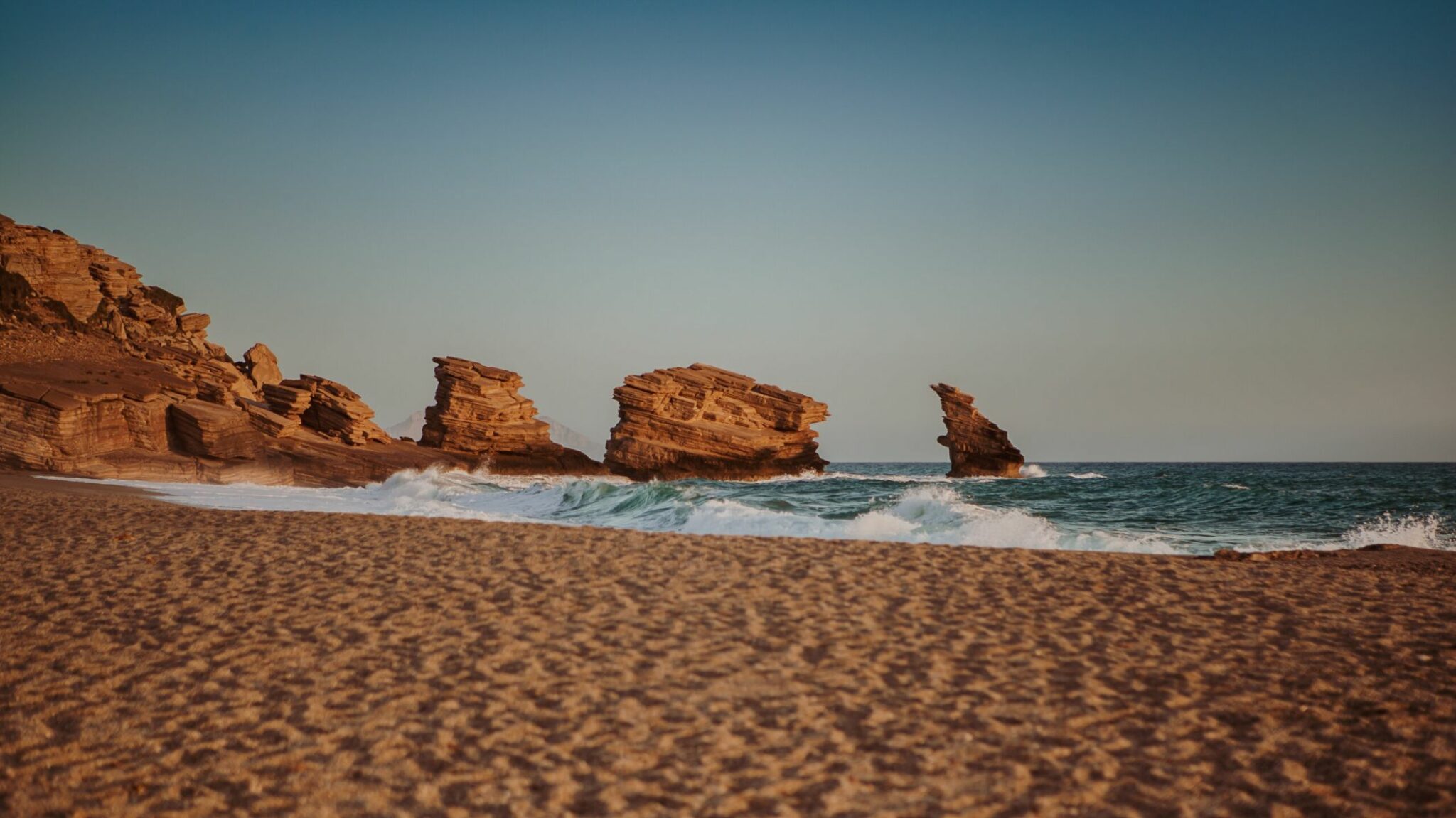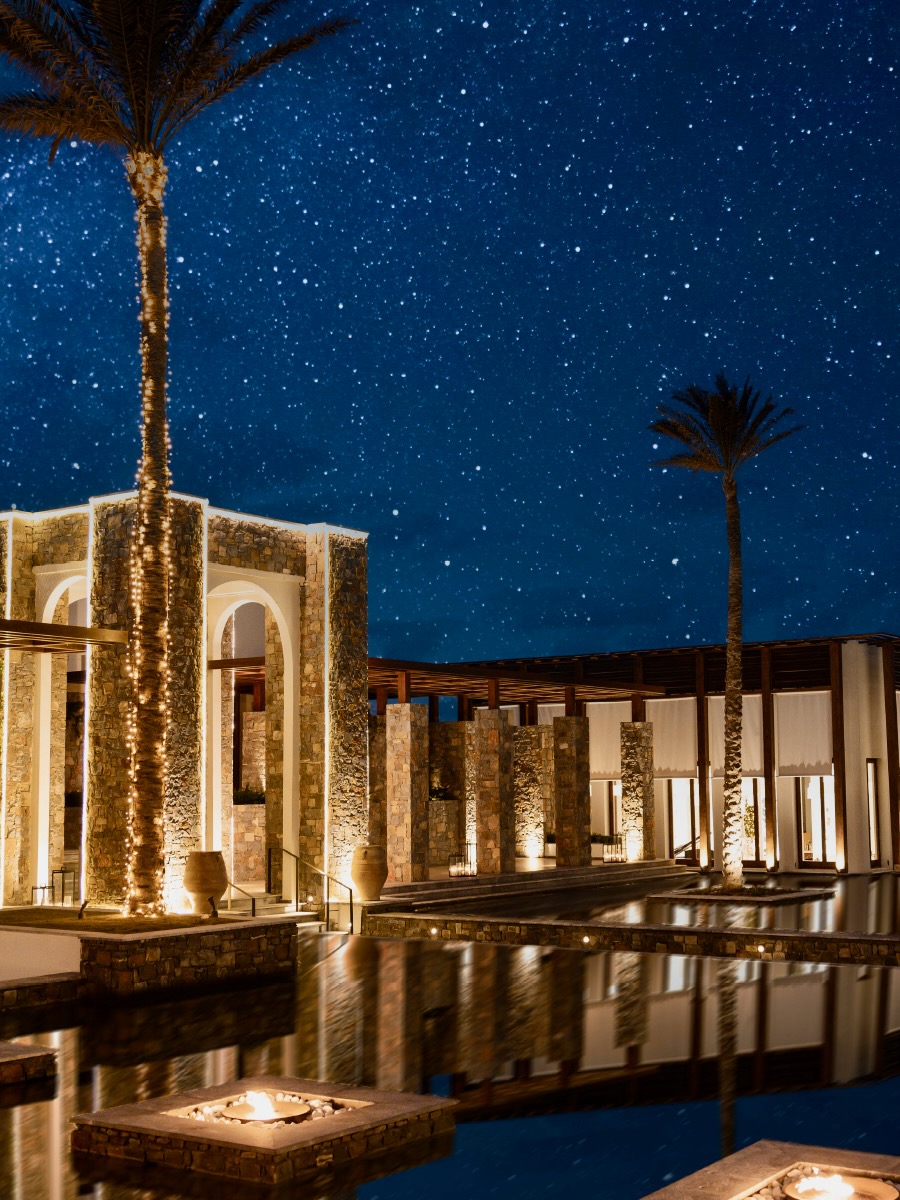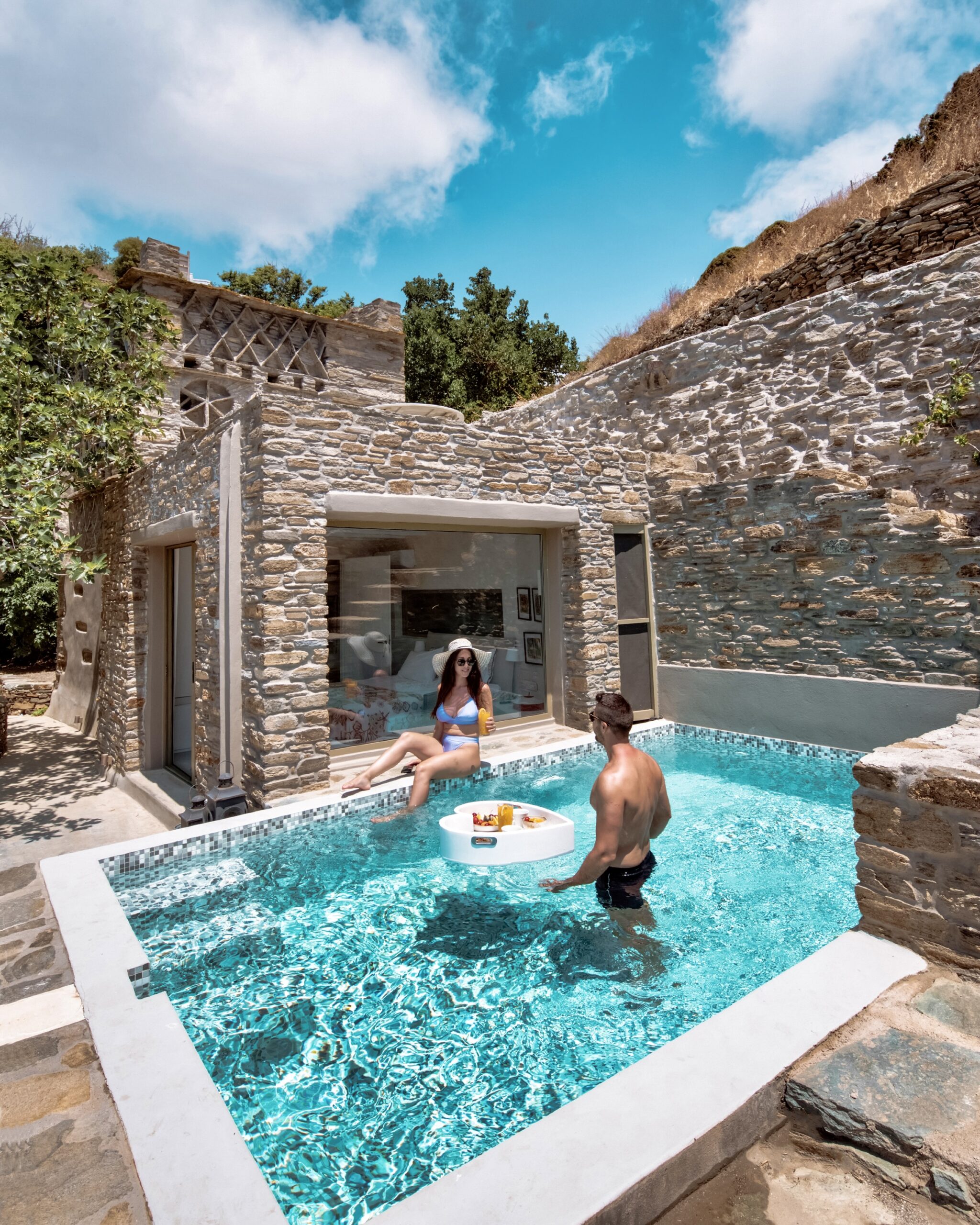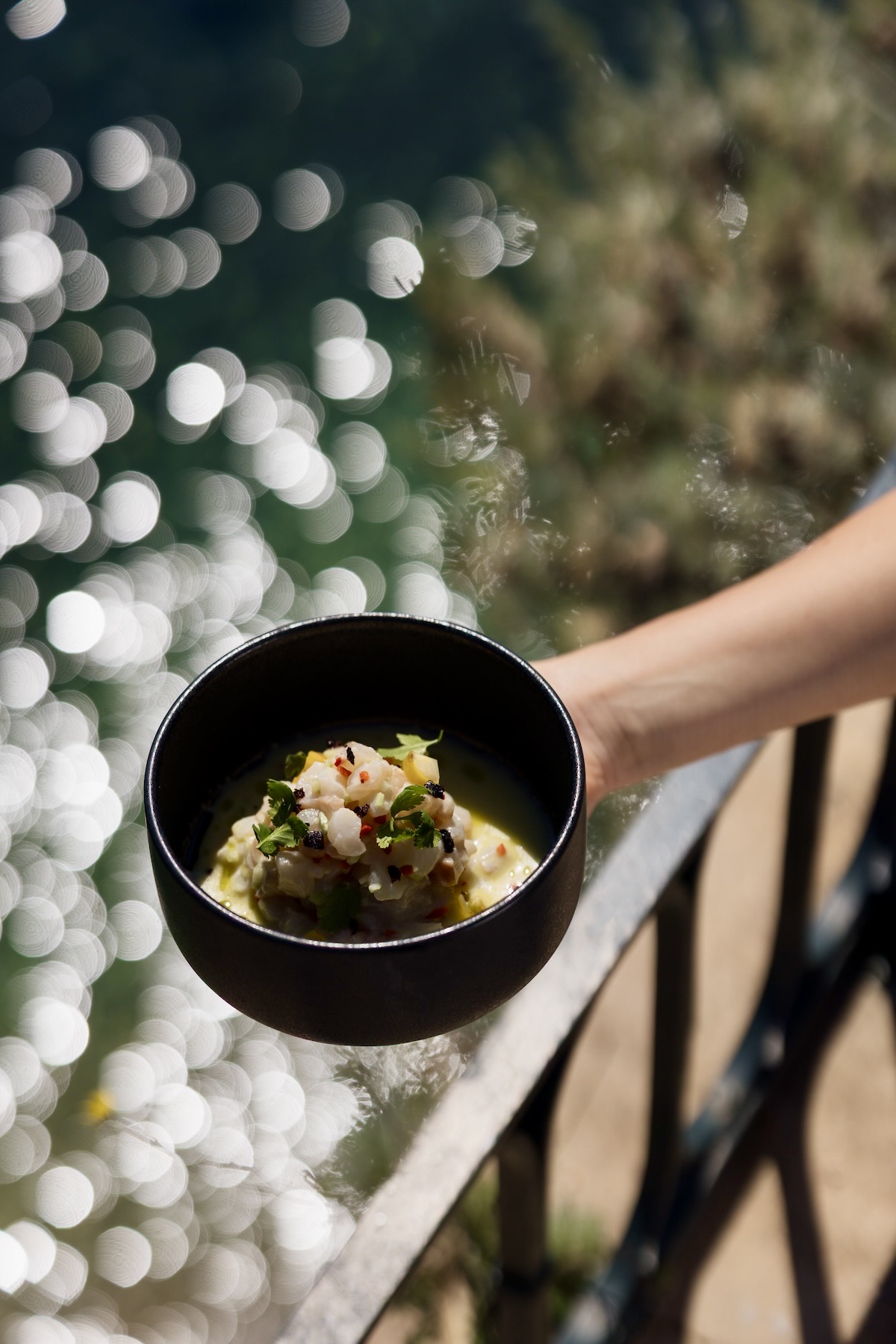The Terroir and the varieties
Rethymno, a region tucked within the embracing arms of the Chania and Heraklion Prefectures in Crete, is characterized by a rugged, mountainous terrain. On one end, the majestic White Mountains raise their snowy peaks, marking the region’s western boundary. Conversely, the eastern confines of Rethymno are defined by the grandeur of Psiloritis Mountain, with an austere beauty that is unrivalled.
The terrain, harsh and unyielding, offers scant fertility, yet a myriad of orientations suitable for the cultivation of grapevines. A Mediterranean climate prevails here, with summers radiating heat and aridity. However, a saviour arrives in the form of the region’s elevation. As day succumbs to night, a substantial decrease in temperature blankets the landscape, providing relief to the vineyards. This dichotomy between day-night temperatures results in slower maturation of the grapes, nurturing the development of a rich aromatic potential and refreshing acidity.
Rethymno’s vineyards for the most part reside at elevations surpassing 600 metres, although there are crops at lower altitudes where the more fertile clay-rich soils aid the plants in battling drought and endow the local Vidiano wine with mineral notes. The size of the Rethymno vineyard may seem diminutive when compared to its peers on the island, yet it possesses unique quality attributes that distinguish it from the crowd.
Among the vineyards, many carry the wisdom of the ages in their roots, with a notable number of them being near-immortal, such as the Vidiano grape, the rebirth of which is credited to these very vineyards. Born on the mountains of Rethymno, Vidiano has earned a reputation as not only one of the most significant white varieties within Crete but throughout Greece. This variety boasts a high resistance to diseases and gives birth to wines of remarkable quality, delicately expressing the influence of oak, creamy nuances from malolactic fermentation, and an opulent texture derived from contact with fine lees.
The Rethymno Prefecture is also home to other white varieties such as Athiri, Vilana, Thrapsathiri, Moschato Spinas, and red varieties such as Liatiko, Romeiko, Kotsifali, Cabernet Sauvignon, Grenache Rouge, and Syrah. The wines produced in Rethymno are permitted to use the Protected Geographical Indication (PGI) of Rethymno or the broader PGI of Crete, the latter typically utilized when part or all of the grapes originate from neighbouring prefectures.
Wineries and production methods
In the vibrant heart of Rethymno, the family-run enterprise Klados Winery stands with a tale that began in 1997, when Emmanuel Klados, a chemist and oenologist, forged the path for this modern vineyard. Since 2000, the winery’s team embarked on a mission to highlight the regional Vidiano grape variety, which has been organically grown since 2013. Today, the reins of the vineyard have been passed onto the new generation, with Stelios, an accomplished chemist who has studied in Greece and Italy, at the helm. Their “White Diva” label, a pure Vidiano, teases the senses with notes of lemon verbena, green apple and peach, wrapped in a creamy texture. “Mega Geraki”, a blend of Moschato Spinas and Vidiano, brings to life a wine with fresh acidity, floral and fruity scents. “Pink Blackbird”, an enticing rosé, has fruity overtones and botanical hints from the Kotsifali variety. The winery welcomes guests, offering a taste of its rich history and passion.
Address: Skepasti Mylopotamou, Rethymno, Telephone: +30 28340-51589, info@kladoswinery.gr, kladoswinery.gr.
Founded in 2019, the Iliana Malihin Winery success comes from years of dedication by Iliana’s Malihin, a devout practitioner of organic viticulture. Committed to preserving old vineyards in the villages of Rethymno, she procures grapes from high-altitude villages of Melampes, Fourfoura, and Meronas. The flagship of this winery is “Vidiano Old Vines”, a full-bodied wine with ripe apricot, honey, and chamomile undertones, derived from the aged vines in Melampes village, resting at an elevation of 800m. “Vidiano Young Vines”, a more playful variant, showcases pomegranate aromas and refreshing acidity. “Liatiko” from Meronas marries ripe fruit scents with earthy and spicy tones. This winery invites visitors to embark on a journey of the senses, against the backdrop of its rich heritage.
Address: Melampes Ag. Vasileiou, Rethymno, Telephone: +30 6979344044, ilianamalichin@gmail.com, iliana-malihin-winery.business.site.
Established in 2017, the Kourkoulou Winery at the foothills of Psiloritis, near the breathtaking Agiou Antoniou Gorge, came into being through the efforts of Xenia Kourkoulou and her siblings Zaharenia and Pavlos. The estate produces 15,000 bottles from native Cretan varieties, grown in their own organic vineyard, with a small portion sourced from collaborating vine growers, while esteemed chemist and oenologist Katerina Karabatea oversees the operations. Standout labels include “Pentozali White”, an elegant blend of Vilana, Vidiano, and Moschato Spinas. “Pentozali Rosé” is a rosé interpretation of Liatiko, while “Vidiano Monovarietal” is a refined, balanced Vidiano from the estate’s vineyard, located 360m above sea level. Visitors are welcome to experience the captivating allure of this winery.
Address: Patsos Amariou, Rethymno Phone.: +30 6948099169, info@kourkoulouwinery.gr, kourkoulouwinery.gr.
The history of the Metaxakis Winery began in 1927 at “Armí of Gouvas,” a 80-acre mound of earth which was later rechristened as “Lagára.” In 1993, the first winery was established and by 2017 it had been modernised, operating as an attractive haven for visitors. Today, the family cultivates 35 acres of vineyards and olive trees. The winery produces the “Korfi” label in three variations—white, rosé, and red—and is open for visitors.
Address: Orthé Mylopotámou, Rethymno, Tel: +30 28340-22228, info@metaxakiswinery.gr, metaxakiswinery.gr.
Sights and points of interest on the wine routes of the region
Journeying through Rethymno’s wineries presents an enthralling dive into the splendid mélange of culture, history and natural beauty that this corner of the world generously provides. This exploration transcends the borders of traditional vineyard tours, weaving a vibrant tapestry of time-imbued tradition and emerging modernity.
Your voyage across Rethymno’s wine map will unfurl a series of concurrent experiences, providing glimpses into fascinating historical landmarks like the eminent Arkadi Monastery, the enigmatic Melidoni cave and the pottery-famed village of Margarites. In the southern expanse of Rethymno, the arresting beaches of Agios Pavlos and Triopetra will draw your gaze towards the boundless Libyan Sea.
Melidoni Cave and village: Venturing south from the Klados winery, the Melidoni Cave, an archaeological marvel, awaits exploration. The cave, once revered as the home of Talos, the legendary bronze giant and protector of the island, carries a solemn history. The doline at its entrance opens onto the ‘Hall of Heroes’, a silent tribute to the tragic massacre by Hussein Pasha’s army in 1824.
In the neighbouring village of Melidoni, you can wander through narrow lanes, flanked by captivating Venetian and Ottoman architectural influences, the ornate Church of Hagia Sophia, residences with intricate door frames, and ancient olive presses – all revealing a multi-layered history.
Margarites: Next, is the potters’ village of Margarites, home to the Metaxakis winery. One of Crete’s oldest settlements, its charm is held in its slender lanes, stone houses, arching windows, doorways graced with carved transoms, stone fountains, and courtyards adorned with pots brimming with flowers. Witness the skill of local artists as they masterfully meld traditional and modern forms, producing striking ceramics and jars. Every July, the village springs to life during the Ceramics and Pottery Festival, a colourful tribute to this ancient craft.
Arkadi Monastery: Northward from the Kourkoulos vineyards, the Arkadi Monastery offers a humbling encounter with Crete’s history. The monastery’s compelling architectural presence, dating back to the 11th century, stands as a testament to the Cretan people’s heroic struggle for freedom. It was within these sacred walls that 964 Cretans, including women and children, held their stand against Mustafa Pasha’s forces during the 1866 revolution, culminating in a heroic last stand that sent shockwaves across Europe. At the heart of the monastery’s quaint courtyard stands the majestic Church of the Transfiguration and Saints Constantine and Helen. This splendid structure, with its captivating Renaissance façade, imparts a profound sense of reverence. Other key sites within the monastery grounds include the historic refectory, the ‘kelarika’ cells, the gunpowder storage, the museum, and an art gallery.
On the beaches of the south: Further south, the famed Agios Pavlos offers a tropical haven with towering sand dunes and an enchanting sandy bay kissed by turquoise waters. One of its three coves hosts the eponymous holiday village, offering a plethora of taverns, cafes, hotels, and inviting beaches.
Equally stunning is the adjacent Megali Triopetra, situated northwest of Agios Pavlos. Notable for its triad of sea rocks, its expansive sandy beach is home to a sprinkling of hotels and taverns. Nearby, Mikri Triopetra offers a more serene setting with its welcoming tavern, a perfect spot for families. Conveniently located near the Iliana Malihin winery, these beaches overlook the Libyan Sea, providing mesmerising vistas.
A journey through Crete is not merely a voyage across space but also across time, immersing the traveller in a rich cultural tapestry woven with history, natural beauty, and the timeless art of winemaking.




